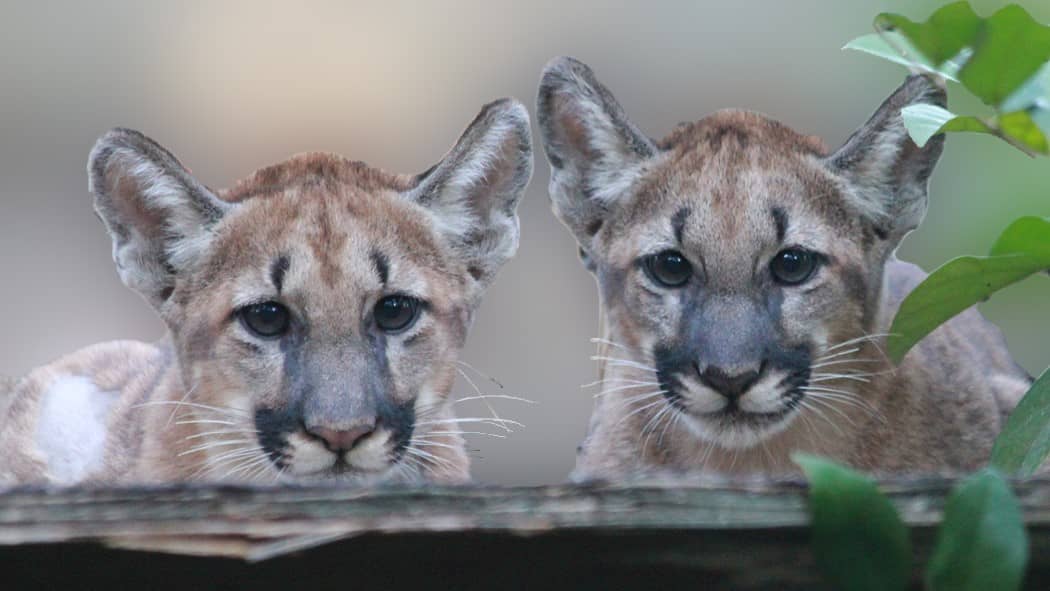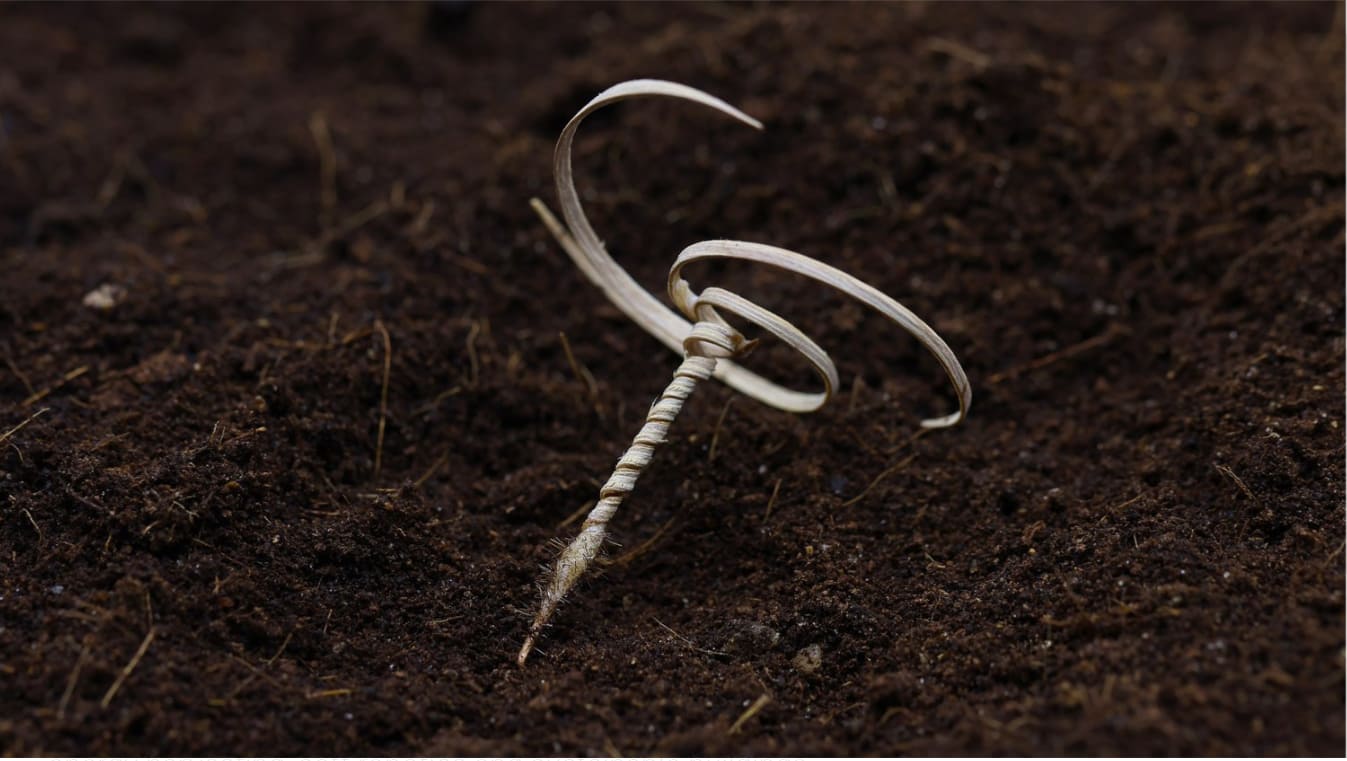Imagine if you had to cross 12 lanes of LA traffic on foot to go on a date? Would you go? This is the case for one big cat, who risks life and limb on their prowl for love. But thankfully, there are folks devising ways to bridge this gap—literally—to help save this unique species!
When our modern civilizations have disrupted millennia-old wildlife patterns, what do we do? Well, while we can’t up and move mega-cities like Los Angeles or New York City, there are ways that we can make it easier for creatures to keep doing what they do, even with the 24-hour traffic.
Here’s an eye-opening look at a simple plan that, if implemented in places across the globe, can help restore balance to natural systems and wildlife populations, all while keeping us humans more safe.

The All-American… Lion?
Once upon a time, there was a lion that roamed throughout the Americas, from sea level to the snowy mountains. Its vast range gave birth to over 83 different names for this giant—the most names any animal has. Today, you may know of this magnificent creature as a “cougar,” “panther,” “puma,” “catamount,” or more simply: “mountain lion.” 1 But all refer to the same animal!
These days, American lion (Puma concolor) populations are limited to the western United States, with a small population regaining a foothold in Florida’s Everglades. At best estimate, there are only 30,000 American lions roaming the Americas, and these solitary creatures are facing a big threat to restoring their populations: traffic.
Without some kind of intervention, it’s estimated that the phenomenal American lion could go extinct in less than 12 years.
Mountain lions spend most of their time in their own territories, only venturing out to find a mate or to avoid threats. But when they can’t travel without passing a river of cars, most lions end up mating within their own populations. And just like with humans, without a diverse gene pool offspring begin to suffer from birth defects: cleft jaws, kinked tails, small litter sizes, and a higher susceptibility to disease.
For those who do make it across these roads unscathed, their impact is profoundly positive! One male mountain lion from another territory can bring the necessary genetics to create a healthier lineage—they just need to get there. So, how do we make this happen? Wildlife corridors!
The idea is simple: give animals another path to take! Places like Banff, in Alberta, Canada have been seeing the benefits of these sorts of structures that are enabling elk and other animals to continue their migratory patterns.
To replicate this success, people in LA are planning on building multiple bridges to help mountain lions safely cross and repopulate their amazing species. This video from Seeker shows us the how and the why—and the huge expected success—of these small changes!
For more great content from Seeker, check out and subscribe to their Youtube channel!
Curious what’s in it for us?
Well, as with any top predator, mountain lions help to regulate the whole ecosystem by keeping other populations in check. Deer populations can easily get out of control, which leads to overgrazing of specific plants that other creatures need, as well as more car collisions.
More bridges equal more mountain lions, which equals fewer deer, more biodiversity, and fewer car crashes all around, which keeps us safer and our planet healthier.
Worried about more mountain lions in your backyard?
No need—if they don’t have to be around us, they won’t be! As things stand right now, one of their favorite food sources (deer) spend a lot of time in golf courses and other man-made grassy areas. With wildlife corridors giving both the lions and the deer more space to roam away from us, they’re sure to take advantage.
If you do encounter a mountain lion though, don’t run or play dead. Make yourself look bigger by opening up your coat. Stand tall, speak firmly, and even throw rocks and sticks at it and the cat should go on its way. They really, really don’t want to hang out with us.
Do you know if you have any wildlife corridors in your area?
They’re gaining popularity and may even exist around you without your knowledge! To check on the status of wildlife corridors in your area, get in contact with your local Agency of Natural Resources or a local land trust. They’ll be able to tell you what’s around! Here’s a great list of examples from the National Wildlife Federation of how these wildlife corridors are being used to help populations, not just of mountain lions, but turtles, salamanders, monarchs, moose, and a variety of deer species.
If nothing really exists, you can also play a role in building one by expressing your concerns with your local representatives.
For my neighbors in Vermont, check out the Critical Paths Project! They’re figuring out where the biggest wildlife crossings happen in the state to identify the most critical places these structures are needed. This work will help enhance migration pathways, strengthen wildlife populations, and reduce animal-vehicle collisions that can be fatal. We also have a great salamander tunnel!
Small changes to already existing structures can make a big difference!
When we learn more about our world’s systems, the more we can pivot what we’re doing to benefit them. These wildlife corridors are a win-win for everyone: keeping both us and them safe to continue life and keep our world thriving. Not to mention, building an overpass, underpass, or tunnel—without having to rip up our already existing structures—is just the fiscally responsible thing to do.
Although the best thing to do to save a species is to conserve land, the next best is finding out how to work with what we already have to help.
Here’s how other folks are restoring land by repairing lost connections! These next articles are sure to leave your spirits soaring.
All Hail the Great Hellbender Salamander!
Snot otter, lasagna lizard, grampus, whatever you call it, this gigantic, slimy, and loveable creature could be the unlikely superhero saving the world’s amphibians. How, you ask? Well, let’s get to know them a little better and find out!
Read Article Watch Video Listen to PodcastAs always, my friend, stay open to new possibilities!
- Sam

Don’t miss out on a single article!
Enjoy unlimited access to over 500 articles & podcast that give you a positive perspective on the state of the world and show you practical ways you can help.
Notes:
- “FAQ’s | Mountain Lion Foundation.” Mountain Lion Foundation, 22 Apr. 2021, mountainlion.org/about-mountain-lions/frequently-asked-questions/#Same. Accessed 3 May 2021. ↩
- Seeker. “Could These Bridges Keep Mountain Lions Safe?” YouTube, 24 Nov. 2020, www.youtube.com/watch?v=T8Q70QvvtdI. Accessed 3 May 2021. ↩








